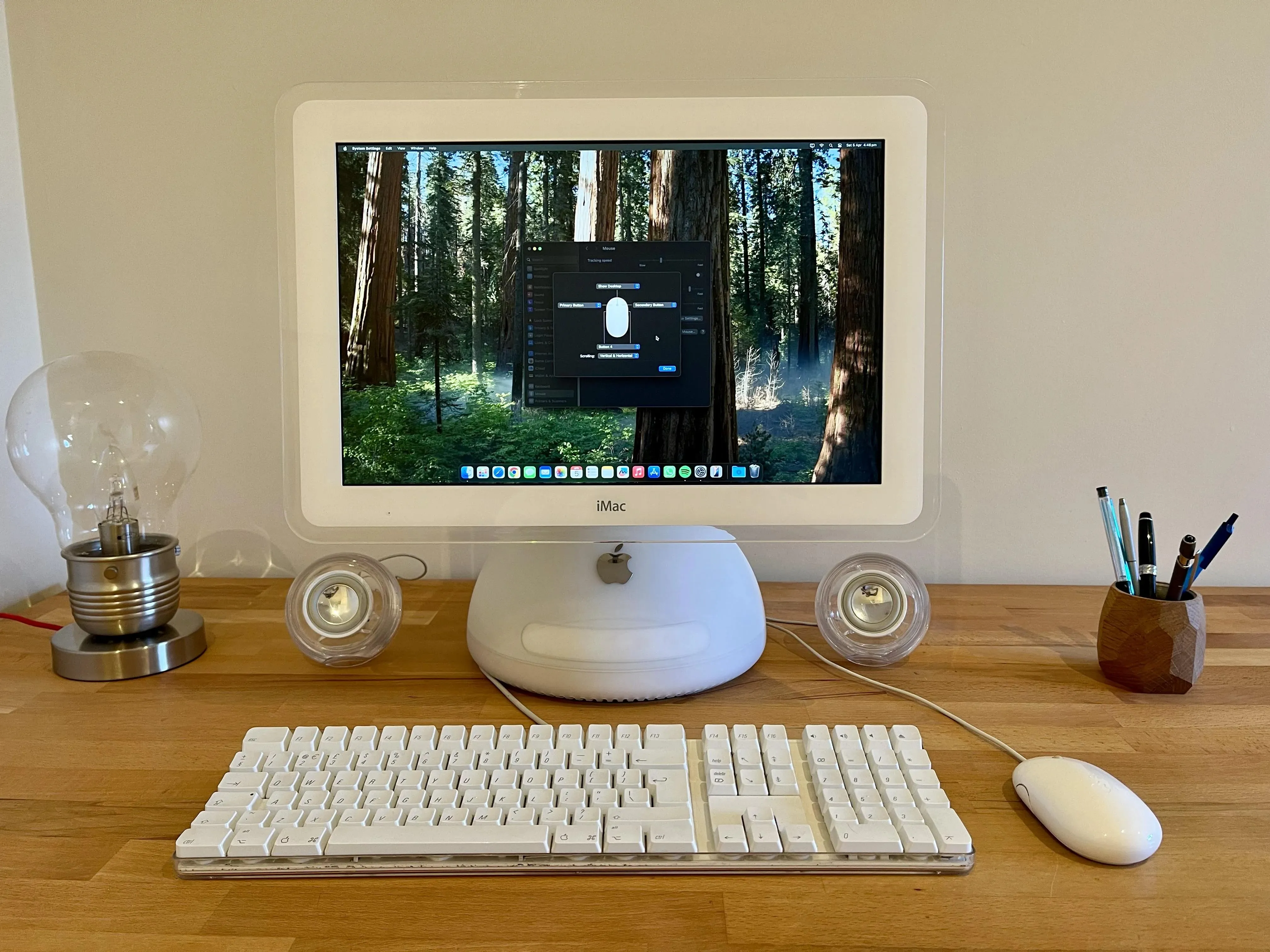When discussing iconic Apple products, the iMac G4 holds a special place in tech history. Nicknamed the “iLamp” or “sunflower iMac,” the iMac G4 desktop wasn't just a computer—it was a bold design statement and a major leap in engineering. Released during a time of significant transformation for Apple, the iMac G4 helped redefine how people viewed desktop computers.
In this blog post, we’ll take a closer look at the legacy of the iMac G4, its standout design features, performance capabilities, and why it remains a beloved collector's item among Apple enthusiasts.
The Birth of the iMac G4: A Bold Design Departure
The iMac G4 was introduced by Steve Jobs at Macworld San Francisco on January 7, 2002. It was designed to replace the colorful and curvy iMac G3, which had already shaken up the PC market with its vibrant style.
But with the iMac G4, Apple took a sharp turn away from translucent plastic toward sleek, futuristic minimalism. The most eye-catching aspect? A 15-inch flat-panel LCD display mounted on an adjustable arm, floating above a white half-sphere base. This innovative design allowed users to adjust the screen in all directions with incredible ease—an ergonomic feature rarely seen in desktop computers at the time.
This approach made the iMac G4 desktop not just a tool, but a piece of art—one that could easily sit in the middle of a living room or creative studio and spark conversation.

Technical Specifications: Power in a Beautiful Package
While the iMac G4 was renowned for its design, it was also a capable machine under the hood. Let’s explore some of the specifications of the base model at launch:
-
Processor: 700 MHz or 800 MHz PowerPC G4
-
Memory: 128MB or 256MB of SDRAM (expandable to 1GB)
-
Storage: 40GB or 60GB hard drive
-
Display: 15-inch LCD with 1024x768 resolution (later 17- and 20-inch models followed)
-
Optical Drive: CD-RW/DVD-ROM combo drive or SuperDrive (DVD-R)
-
Connectivity: USB 1.1, FireWire 400, Ethernet, modem, and optional AirPort wireless
While these specs might seem modest by today’s standards, they offered smooth performance for early 2000s tasks such as web browsing, photo editing, and music playback—especially with Apple’s own iLife software suite.
iMac G4 Desktop and Mac OS X Integration
The iMac G4 desktop shipped with Mac OS X 10.1, but was quickly updated to Mac OS X 10.2 Jaguar, which introduced features like Quartz Extreme graphics acceleration and better Finder performance.
The marriage between hardware and software was seamless—one of Apple’s key strengths. Mac OS X brought modern Unix underpinnings and a clean, intuitive interface, giving iMac G4 users an experience far ahead of Windows counterparts at the time.
Apple also bundled iPhoto, iMovie, iTunes, and iDVD, encouraging users to create and manage digital content with ease. This tight ecosystem made the iMac G4 especially appealing to creatives and students.

Why the iMac G4 Still Matters Today
More than two decades after its release, the iMac G4 still captures the hearts of Apple fans, designers, and retro-tech collectors. Here’s why:
1. Timeless Design
Few computers before or since have matched the iMac G4’s aesthetic. Its human-centric design inspired a wave of ergonomic thinking in the tech industry. Even today, it’s featured in design museums and creative workspaces as a symbol of innovation.
2. Cult Following
Tech collectors and vintage Mac enthusiasts often seek out the iMac G4 desktop for restoration projects or nostalgia builds. Some even mod the hardware with modern internals to preserve the original look while gaining modern capabilities.
3. Educational Value
For students of industrial design and human-computer interaction, the iMac G4 offers a case study in how form and function can align beautifully. It’s still taught in design courses as an example of how Apple solved usability problems through creativity.
Comparing iMac G4 to Modern iMacs
Today’s iMacs, like the M3-powered iMac models, are slimmer, faster, and more powerful than ever. Yet the iMac G4 remains one of the most radical designs Apple ever launched.
Modern iMacs place all components behind the screen, offering less adjustability than the G4’s swing-arm. While contemporary models benefit from improved specs and Retina displays, they lack the mechanical personality that the iMac G4 introduced.
In some ways, the G4 was ahead of its time—it was Apple’s bold experiment in redefining what a desktop could be, and that spirit still influences product development today.

The iMac G4 Desktop Was a Game Changer
The iMac G4 wasn't just a computer—it was a technological sculpture, a functional piece of art, and a strong statement of what Apple stood for: elegance, simplicity, and innovation. With its graceful design, solid performance, and user-friendly features, it paved the way for the modern all-in-one desktop.
If you’re a fan of Apple history or simply appreciate beautiful engineering, the iMac G4 desktop is a machine that deserves recognition and respect. Whether you own one, remember it fondly, or are discovering it for the first time, the iMac G4 continues to inspire a new generation of designers and tech lovers.


-1710487164.jpg)

